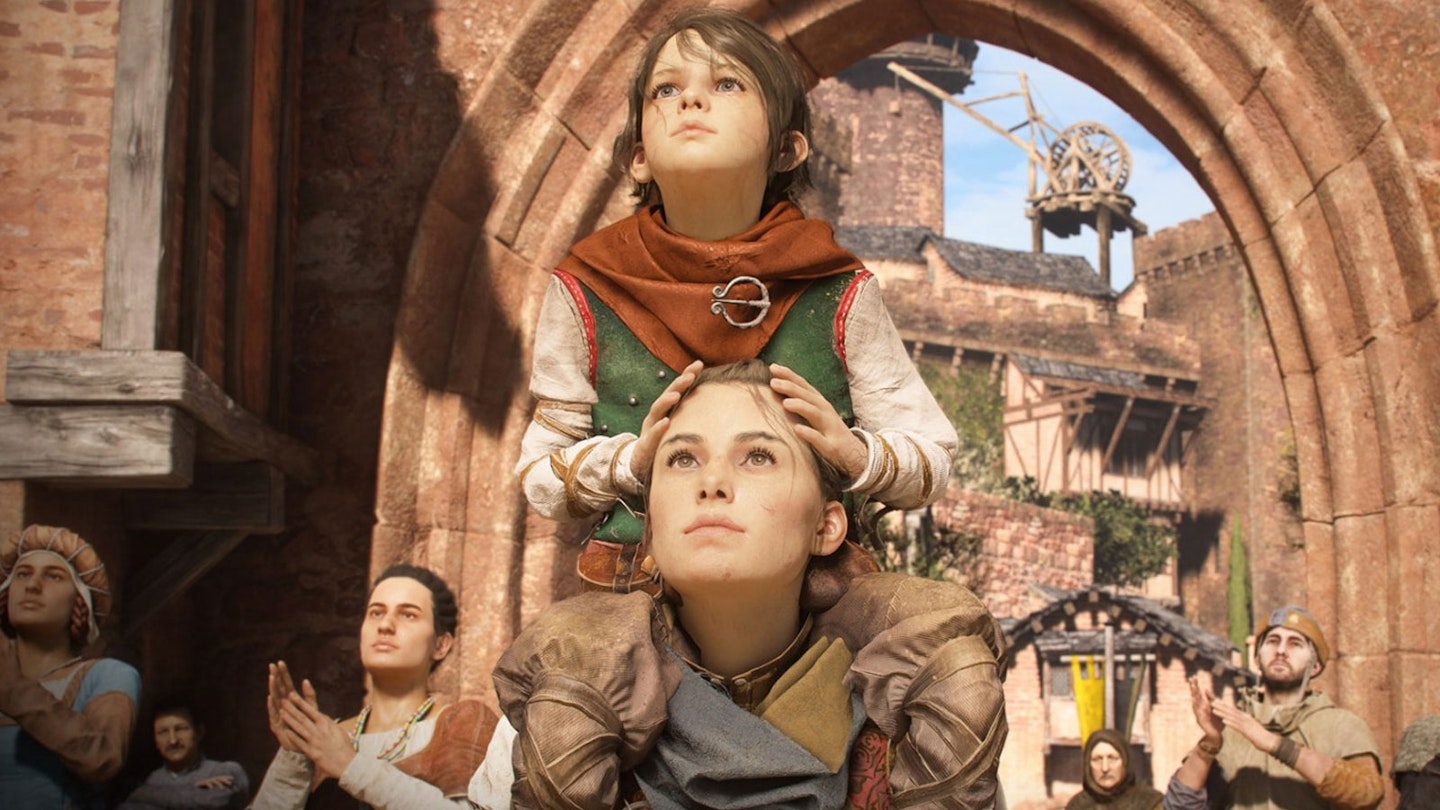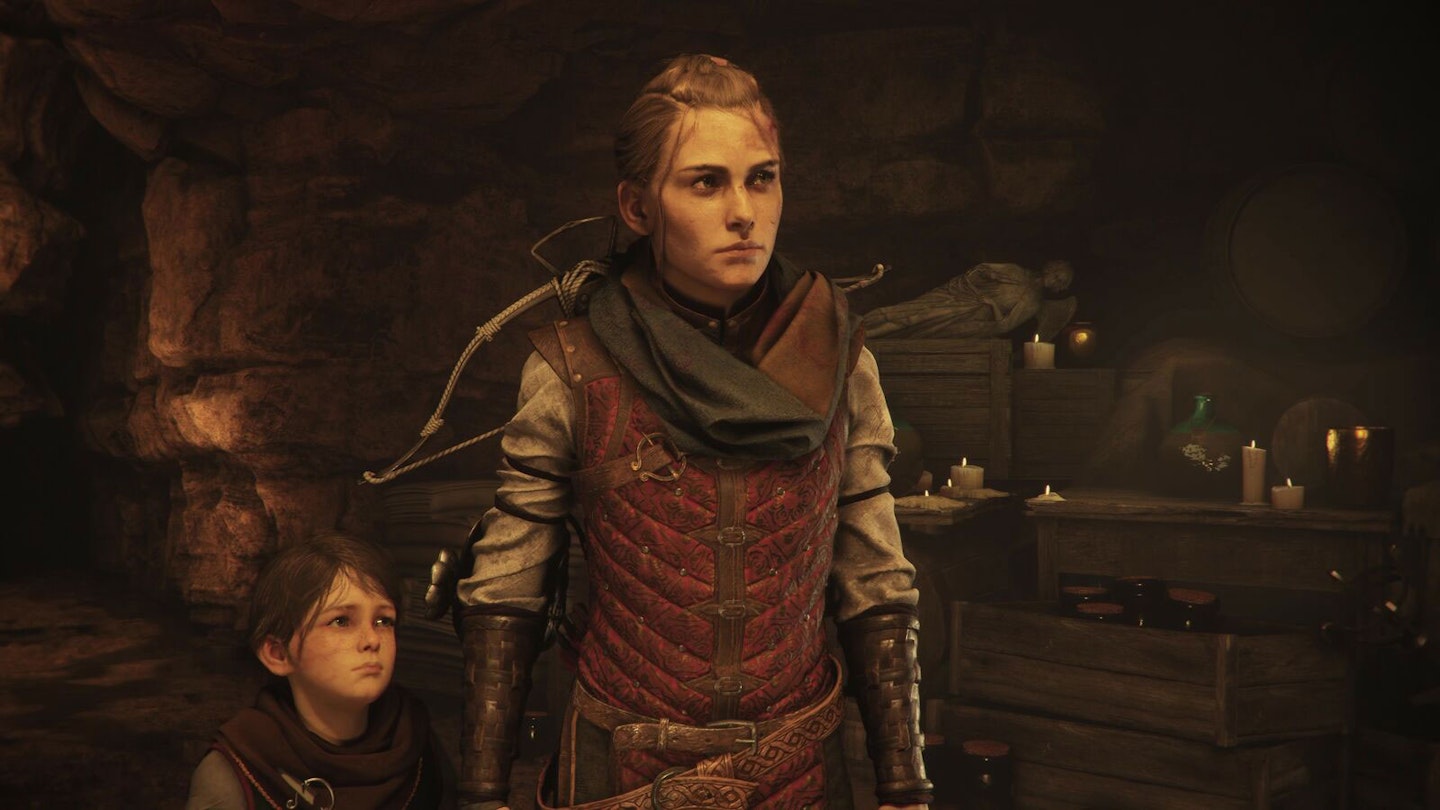Platforms: Xbox Series X, PS5, PC, Nintendo Switch (Cloud Only)
The opening hours of A Plague Tale: Requiem are a masterclass in how to destroy hope. Players join the now-seasoned survivor Amicia and her younger brother Hugo as they start a new life in a bucolic town, far from the rat-infested hell of Guyenne they escaped in 2019's sleeper hit A Plague Tale: Innocence. Predictably, it's not to last, as the strange affliction that ties Hugo to the Black Death haunts them even to their new home, but it's a testament to Asobo Studio's narrative skill – under lead writer Sébastien Renard – that you'll be so lured in by a sense of home, of safety, that it's all the more crushing when it inevitably, tragically, comes crashing down.
It's heartbreaking enough for new players, but for returning ones, those calm opening chapters are all the more upsetting. As Amicia and her friend Lucas, an aspiring alchemist, explore their new home, Requiem ratchets up the tension, revealing dark secrets about the seemingly idyllic town, and hints that they may not have escaped the forces that were pursuing Hugo. By the time the plague-ridden rats finally appear, it's in a horrific, apocalyptic tidal wave of writhing, squirming, ravenous beasts that's truly disturbing.

It's tempting to describe what follows as "more of the same" as its predecessor, and in structural terms wouldn't be far from the truth. Set in 14th century France, Requiem remains something of a medieval cross between _Uncharted_and The Last of Us – a story-driven adventure, albeit with a heavier emphasis on stealth and environmental puzzle solving than combat. Indeed, those returning players will find the mechanics barely updated from the first game, with Amicia having most of the same skills and utilising the same alchemical concoctions to escort Hugo to safety once more – this time to an island that haunts his dreams, where a cure for whatever links him to the rats and the plague may be found.
Every area, every scene, is a meticulously crafted, beautifully presented vista, something to be visually savoured.
However, that does a disservice to how considered and deliberate each aspect of Requiem is. Chapters are better paced than the first game, balancing fraught stealth sections with smart puzzle solving. Those life-or-death stealth encounters, typically being hunted by soldiers or mercenaries looking to kill Hugo or claim his power for their own, are broader in scope, offering more routes through them and allowing more experimentation in how to navigate them. Sometimes, there simply is no way to dispatch or distract enemies, leading to desperate, heart-pounding chases to safety, a reminder of the sheer stakes Amicia faces.
It's all stunningly gorgeous too. Every area, every scene, is a meticulously crafted, beautifully presented vista, something to be visually savoured. Even the darkest, grimmest, most rat-filled sections have a certain splendour all their own. The first game was pretty; this is another level.

Amicia does have a few new tricks up her sleeve to survive this darkly beautiful world though. Although the first several chapters see her restricted to using only a sling as a weapon, able to kill enemies with a well-slung rock or stun armoured foes, she eventually gains a crossbow, giving her more firepower. However, bolts are exceedingly rare, as are knives, which can be used to deliver melee kills. It's a reminder that despite everything she's been though, Amicia remains a teenage girl, ill-suited to taking on soldiers twice her size in full plate armour, and encourages sneakier play.
The weapons are best thought of as tools, in fact. The sling can fly off shots of alchemical goo to light or extinguish fires, allowing you to avoid hordes of rats – or, by putting out the torches of soldiers, use the rats as weapons to devour enemies. Crossbow bolts can be set aflame and fired into wooden objects, creating more permanent light sources, while tar can be thrown to enhance fires, creating larger but brief pools of safety in rat-infested areas. Figuring out what to use and when is pivotal to progression.

Another new addition is a rotating cast of companions to whom Amicia can issue commands. Some will simply be there to help solve two-person puzzles, such as turning a crank on the other side of a room. Others, such as the powerful but untrustworthy Arnaud, can be sent to fight enemies, allowing Amicia to sneak past unharmed. Hugo plays a prominent role too – as his connection to the rats grows, he finds himself able to use a sort of echo location pulse showing where enemies are, sensing their blood through the rats' hunger, or even directly controlling swarms of rats. As much as these guest stars mix up the gameplay in interesting ways, they're never permanent fixtures, instead rotating in and out as the story needs them.
However, because Requiem is primarily a narrative adventure, it's also extremely linear. There are collectibles to hunt down – flowers and feathers that Amicia gathers for Hugo's collections, and 'souvenirs', records of memorable moments along the journey – but beyond these, there's no real exploration to be had. Similarly, levelling up Amicia's skills – improving her stealth, crafting, and combat abilities – feels almost scripted, happening at more-or-less random as you progress through the game. When everything is so meticulously presented to the player, with no real freedom to go outside the boundary, there's no real way to enhance or improve particular attributes.
Ultimately though, it's story that is king in Requiem. This is a darker, more mature, ethically murkier tale than the first game (which wasn't exactly cheery itself). Amicia in particular is challenged, by herself as much as others, over whether she's going too far to protect Hugo. As her body count grows, as she sacrifices whole towns and communities all in the name of her brother, even the player is likely to question if they're doing the right thing. Just because Amicia is the protagonist doesn't necessarily mean she's the hero – and the questions over whether she's done right will linger long after the credits roll.
A truly epic adventure, packed with cinematic moments and phenomenal voice performances, A Plague Tale: Requiem may be too restrictive for some players, but those willing to be drawn into its story will be well rewarded for their time.
